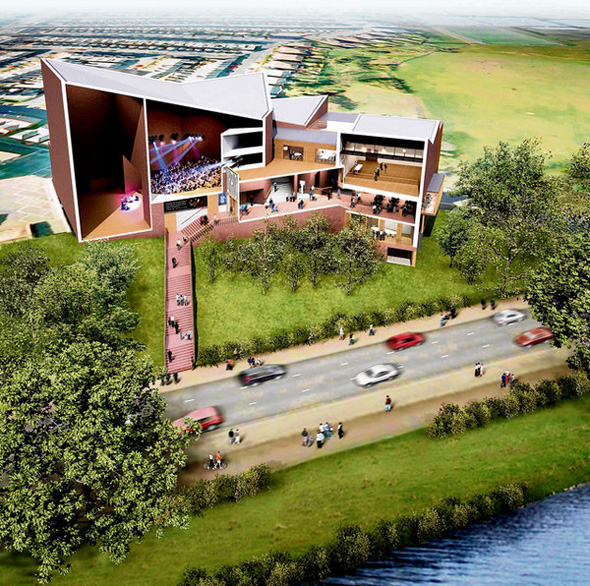Lyric Theatre, Belfast

I didn’t think buildings were made like this any more. Some architects win a competition with a design that responds to purpose and place and makes of them a thing of three dimensions, worked out in its planning and details. Following due adaptation to budget and function, the thing is then built. Builders put together materials in the ways proposed and drawn by the architects, even when these ways are a little more challenging than the plainest, bluntest methods of construction. The builders use their heads and hands to realise what is important about the design and sometimes lend their knowledge to improve it.
This is a description of architecture, traditionally considered. More often, it now goes like this: an architect has a “vision” or a “design concept” whose essential details are then ground down until they suit the most efficient processes of construction. Oblique lines and irregular angles get straightened out and conjunctions of different materials, which might require a little thought to realise, are avoided. The building becomes an assembly of “packages” – glass, concrete, steel, cladding – rather than a coherent whole. The architect’s signature flourishes will remain, but deep down the building will be very like all the others built in the same way.
The Lyric theatre in Belfast, however, does things the old-fashioned way. It started life 60 years ago in the window recess of the consulting room of a neurologist, Dr Pearse O’Malley, and his wife, Mary, who held verse plays there. It then occupied a converted stable loft and, from 1968, a new building which, through shortage of funds, lacked such things as rehearsal rooms and offices and whose dressing rooms and toilets were in portable buildings.
